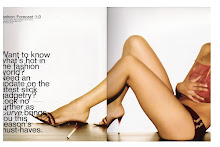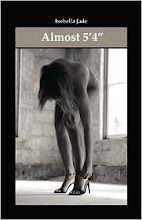I rely so much on the web I can't imagine not doing it. Here are some fun thoughts and some research I did by Googling on the history of modeling. If you want to model, I think you should know a little bit about the history. I will try to fill you in a little bit, but a Google search and some books can tell you even more. When I need inspiration I don’t follow the Supermodels today, I can’t relate to them, but I do follow Chanel and I am reading now a book on Andrew Carnegie, I like books about successful people who are short.
And Chanel was small too and said that she had a body of a 12 year old. As long as there has been art there as been models, a visit to the Moma or the Met will show you this. Sculptures and oils. Fashion brought the main need for models. There were not as many commercial products in the 1700’s and 1800’s and early 1900’s so clothing was made from human mannequins a lot of the time, like a fit model, who had the measurements of the average woman. In the 1700's women were traditionally pear-shaped. In the 1800's, the American women were more rectangle shape, to a bell from, to an hourglass figure late in the century. From the 1900's to 1940, women’s body shapes became rectangular and very slim. From 1940 to1960, the hourglass shape returned and was epitomized by Marilyn Monroe. The 1980's brought about a strong preference for the muscle-toned look. The early 1990's brought with it the very thin almost gross look. Today, woman are so many sizes and shapes. I don’t think one can define the American woman. But today the average height of American woman is 5’3 and weighs about 142 pounds. In the 1940’s it was 5 feet 2 inches and they weighed 129 pounds. The shapes and sizes of women over the past decades have indeed been changing, however, sizing standards and garment proportions used by the apparel industry have not. Which to this day makes it hard for a petite woman to be a model because fashion defines the modeling business a lot.
The first true fashion model is generally believed to be Parisian shopgirl, Marie Vernet Worth. She became the first professional mannequin in 1853, to help her fashion designer husband, Charles Frederick Worth.(http://en.wikipedia.org/wiki/Model_(person)) Also another artist and designer Paul Poriet had his wife model his designs in 1911. Chanel also used models in the early 1900’s, as real live mannequins through out her career, and in the book called Chanel A woman of her own, you can catch a glimpse of this. A couple of the first fashion modeling agencies in the United States was: Ford Models started in the 1940’s and John Robert Powers Agency in the 1920’s. Maybe you will never be accepted into the Ford modeling agency but a Quote from Eileen Ford is: The beautiful woman is the one who really knows herself–her face, her body, everything–and she makes the most of everything she's got." On the other hand, John Powers was an actor first before a modeling agency owner, and a lot of his friends were actors and with his wife started the modeling agency since they knew many actors and Powers put together a catalogu with 40 of his friends photos and sent them around to commercial photographers, advertisers, and department stores,artists. He was thinking about supply and demand and trying to fill a void he was living. This is a perfect example of self serving…Each Decade has a certain style and fabric trend and also model trends: And In the early 1960s there were influential 'partnerships' of celebrities and high-fashion designers, most famously Audrey Hepburn with Givenchy, and Jackie Kennedy with Cassini. Also, many models had a very profound effect on fashion, most notably Twiggy, Veruschka, and Jean Shrimpton. A lot of girls want to be swimwear models but the idea of the bikini finally came into fashion in 1963. The hippie movements late in the decade also had a strong influence on clothing styles, including bell-bottom jeans, tie-dye and batik fabrics, as well as paisley prints and the models of that era represent that look, long hair, interesting hair cuts, geometric looks, thin. If you look into the history of something before you approach it you will learn a lot about business and the way it works. If clothing changes and fashion changes then I think the modeling business will change. Television commercials have only been around as long as the television which is less than 100 years. In the 1940’s. Vogue was founded by Arthur Baldwin Turnure in 1892. Arthur Turnure and Harry McVickar originally founded vogue, a small society journal in New York , in 1892. Its first issues were mainly devoted to coming-out parties, galas, betrothals, marriages, travel, and theatre. Then to the opposite side: Hugh Hefner founded Playboy in 1953.
Wednesday, January 9, 2008
Subscribe to:
Post Comments (Atom)











+copy.jpg)








No comments:
Post a Comment